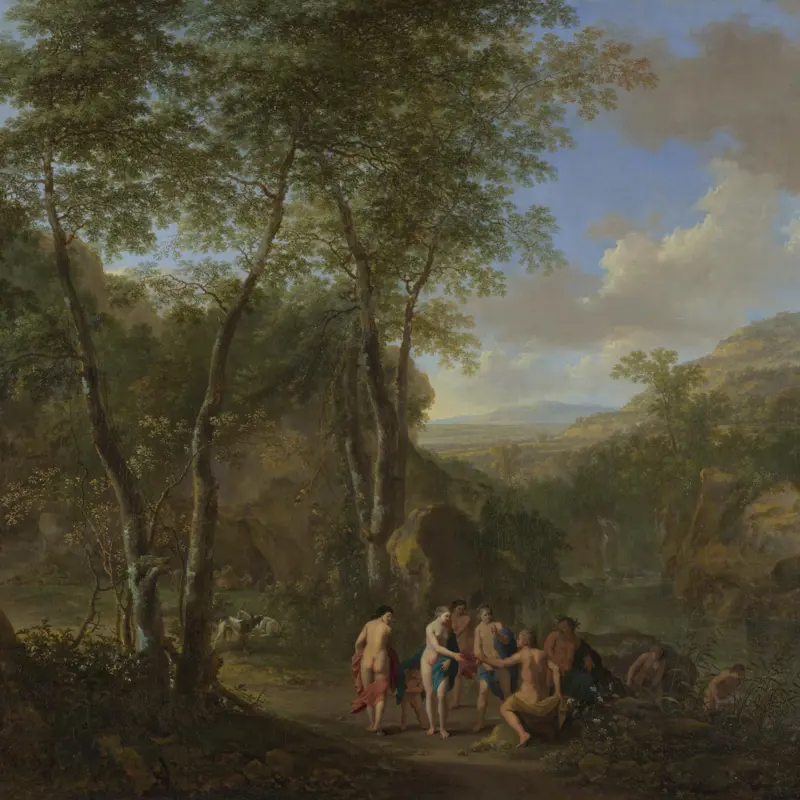Cornelis van Poelenburgh, 'Women bathing in a Landscape', about 1630
About the work
Overview
For those living in Utrecht in the 1630s, this painting must have seemed like a window onto an exotic world. A crowd of naked women pose elegantly while they talk and bathe in a river. Behind them loom the overgrown tower and arches of a Roman ruin, while the bright morning sky glows behind the farmhouses, foothills and distant mountains of what would have been immediately recognisable as an Italian landscape.
Paintings like this – offering a vision of the warm south and intellectual references to the lost world of the classics, as well as an excuse to enjoy female nudity – proved extremely popular. Van Poelenburgh was one of several Dutch artists of the time who travelled to train and study in Rome. They profited from what they had seen and learnt when they returned home, developing a lucrative market for paintings in this genre.
Key facts
Details
- Full title
- Women bathing in a Landscape
- Artist
- Cornelis van Poelenburgh
- Artist dates
- 1594/5 - 1667
- Date made
- about 1630
- Medium and support
- oil on canvas
- Dimensions
- 35 × 43.5 cm
- Inscription summary
- Signed
- Acquisition credit
- Wynn Ellis Bequest, 1876
- Inventory number
- NG955
- Location
- Room 27
- Collection
- Main Collection
- Previous owners
- Frame
- 20th-century Replica Frame
Provenance
Additional information
Text extracted from the ‘Provenance’ section of the catalogue entry in Neil MacLaren, revised and expanded by Christopher Brown, ‘National Gallery Catalogues: The Dutch School: 1600–1900’, London 1991; for further information, see the full catalogue entry.
Bibliography
-
1913T. von Frimmel, Studien und Skizzen zur Gemäldekunde, Vienna 1913
-
1960Maclaren, Neil, National Gallery Catalogues: The Dutch School, 2 vols, London 1960
-
1990I. Gaskell, National Gallery Master Paintings from the Collection of Wynn Ellis of Whitstable, London 1990
-
1991Maclaren, Neil, revised by Christopher Brown, National Gallery Catalogues: The Dutch School, 1600-1900, 2nd edn (revised and expanded), 2 vols, London 1991
-
2001
C. Baker and T. Henry, The National Gallery: Complete Illustrated Catalogue, London 2001
About this record
If you know more about this work or have spotted an error, please contact us. Please note that exhibition histories are listed from 2009 onwards. Bibliographies may not be complete; more comprehensive information is available in the National Gallery Library.

